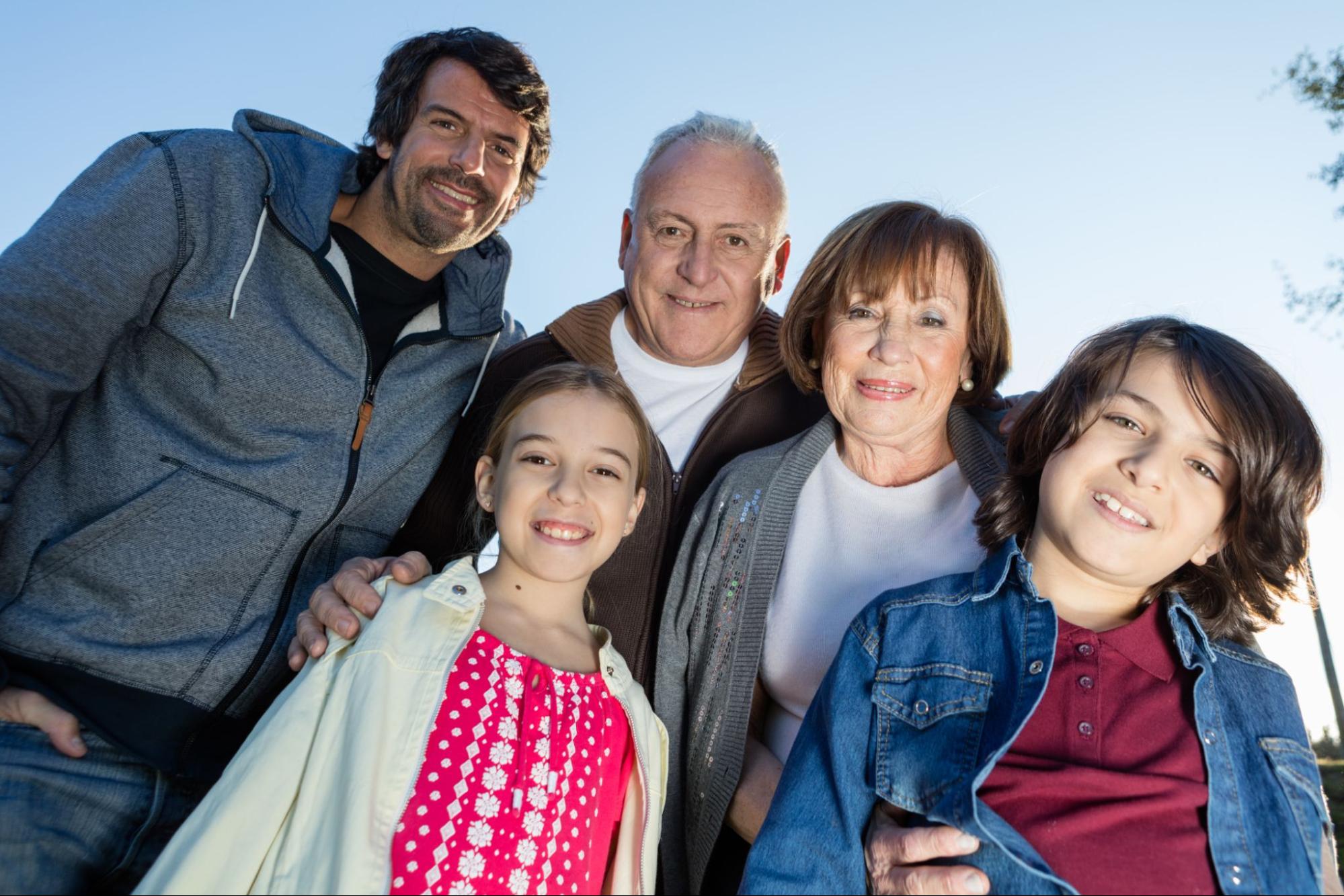10.4 Sociological Theories of Health
Kathryn Burrows
Like all social problems, the concepts of health and illness are socially constructed. The definition of the social construction of illness experience is based on the idea that there is no objective reality, only our own perceptions of reality. The theories surrounding the social construction of health emphasize the social and cultural aspects of the discipline’s approach to physical, objectively definable phenomena. This section examines a comprehensive framework that focuses on the cultural meaning of illness, the social construction of the illness experience, and the social construction of medical knowledge (Conrad and Barker 2010).
10.4.1 The Cultural Meaning of Illness
Most medical sociologists contend that illnesses have both a biological and an experiential component and that these components exist independently of each other. Dominant White culture influences the way we experience illness, dictating which illnesses are stigmatized, which are considered disabilities or impairments, and which are contestable illnesses (Conrad & Barker 2010).
Contested illnesses are those that are questioned or questionable by some medical professionals. Disorders like fibromyalgia or chronic fatigue syndrome are real physical experiences, but some medical professionals contest whether these ailments are definable in medical terms. This causes a problem for a patient with symptoms that might be explained by a contested illness—how to get the treatment and diagnosis they need in the face of a medical establishment that does not believe their symptoms are real.
We also see the social construction of health and illness when we try to measure and treat pain. Individual and cultural perceptions of pain can make it difficult for healthcare workers to treat illnesses since they cannot be measured using a device. A person’s experience of pain is subjective, and a physician’s response to treating pain is highly variable. In addition to individual and cultural differences in the response to pain, the medical system’s response to pain varies by race. Minority women are less likely to receive adequate pain medication during childbirth (Lange, Rao, and Toledo 2017) and the postpartum period (Badreldin, Grobman, and Yee 2019). If you would like to learn more, How we fail black patients in pain [website] explores some reasons why physicians may give less pain medication to Black and Brown people than to White people.
In addition to pain, it can be challenging to come to a shared understanding of physical activity. Assessment tools like the Rating of Perceived Exertion (RPE) Scale attempt to measure exertion at the individual level using accessible language and visual cues. This RPE chart includes the Wong-Baker FACES pain assessment tool, which is used often in healthcare settings because it works for a variety of ages, ability levels, and can be understood by those whose primary language is not English. The Rating of Perceived Exertion (RPE) chart (Figure 10.13) gives a more complete view of an individual’s actual exertion level, since heart rate or pulse measurements may be affected by medication or other issues (Centers for Disease Control 2022).
|
Rating of Perceived Exertion |
|||
|
|
0 – Very light activity |
Minimal exertion, but more than sleeping or stationary activity. |
Heart rate, breathing, and physical comfort level are baseline. |
|
|
2 – Light activity |
Feels like you can maintain the activity for several hours. |
Breathing is normal. Heart rate higher than baseline. |
|
|
4 – Moderate activity |
Feel comfortable, but cannot maintain the activity for more than two hours. |
Can speak a few minutes before getting winded. Heart rate is elevated. |
|
|
6 – Vigorous activity |
Feel uncomfortable with multiple physical signs that your body is working hard. |
Can speak a sentence before becoming winded. Heart rate is elevated. |
|
|
8 – Very hard activity |
Difficult to maintain activity intensity for more than a few minutes. |
Can speak a few words before becoming winded. Heart rate is high. |
|
|
10 – Maximum effort activity |
Feels impossible to maintain activity intensity for more than a few minutes. |
Completely out of breath, unable to talk. Heart rate is very high. |
Figure 10.13. Rating of Perceived Exertion (RPE) Scale combined with the Wong-Baker FACES pain assessment tool. How is this chart an example of the social construction of health?
10.4.2 Sick Role and Functionalist Perspective
Health is vital to the stability of the society, so illness is often seen as a form of deviance. The American sociologist Talcott Parsons studied the social system. He examined the functions of sickness and health in his book The Social System, published in 1951, exploring the roles of the sick person and the doctor. The sick role is defined as patterns of expectations that define appropriate behavior for the sick and those who take care of them.
Having a physician certify that the illness is genuine is an important symbolic step in taking on the sick role. It also reveals the strong power and authority differential between the patient and physicians. An example of the power differential between a patient and the physician is if a physician calls the patient on the phone and leaves a voice message, the social norm is that the patient will call the physician back as soon as possible.
However, if the patient calls the physician, the expectation is that it may take several days for the call to be returned. In this example, the physician’s priorities are different from that of the patient’s.The patient has more social expectations to do what the physician says, and the physician has fewer social norms compelling them to respond to the patient. A long-term illness can make our world seem smaller, more defined by the illness than anything else. An illness can be a chance for discovery, for re-imaging a new self (Conrad and Barker 2007).
10.4.3 Social Disparities and the Conflict Perspective
According to conflict theory, the dominant group in society, those people with power and money, make decisions about how the healthcare system runs. Therefore, they ensure that they have access to quality healthcare. To ensure that subordinate groups stay subordinate, they restrict access to care.This creates significant healthcare and health disparities between the dominant and subordinate groups. These ideas come straight from the conflict perspective introduced in Chapter 3, which emphasizes that social class difference is the main cause of unequal outcomes, including health outcomes. However, as previously discussed, single-determinant models are insufficient to explain our complex social problems.
Healthcare institutions include thousands of doctors, staff, patients, and administrators. They are highly bureaucratic. They do not serve everyone equally, often because of structural racism, sexism, ageism, and heterosexism. When health is a commodity, marginalized people are more likely to experience illness caused by poor diet, and living and working in unhealthy environments.
10.4.4 Medicalization and the Symbolic Perspective
The term medicalization of deviance refers to the process that changes bad behavior into sick behavior. A related process is demedicalization, in which sick behavior is normalized again. Both of these concepts come from the symbolic perspective of sociology, which asserts that society is created by repeated interactions between individuals and groups. Medicalization and demedicalization affect who responds to the patient, how people respond to the patient, and how people view the personal responsibility of the patient (Conrad & Schneider 1992).
So far in this chapter, we have discussed medicalization as the process in which situations and behaviors are considered medical problems rather than social problems. In the case of the medicalization of deviance, the social problems that may be medicalized are deviant behaviors.
Another important example of medicalization is the significant differences in who delivers babies worldwide. In Great Britain, midwives deliver half of all babies, including Kate Middleton’s first two children, Prince George and Princess Charlotte. In Sweden, Norway, and France, midwives oversee most expectant and new mothers, enabling obstetricians to concentrate on high-risk births. In Canada and New Zealand, midwives are so highly valued that they’re brought in to manage complex cases that need special attention.
The medicalization of childbirth in the US is so pervasive that most expectant mothers in the US give birth in hospitals, with fetal monitors, medications, and other medical interventions that are unnecessary for most healthy pregnancies. In fact, severe maternal complications in the US have more than doubled in the last 20 years.
Maternity care shortages have reached critical levels, with nearly half of all US counties without a practicing obstetrician-gynecologist. In rural areas, hospitals offering obstetric services have fallen more than 16 percent since 2004. Midwives are far less prevalent in the US than in other affluent countries, attending around 10 percent of births. The extent to which they can legally participate in patient care varies widely from one state to the next. At times, the cultural stigmas regarding medical practices can cause people to seek medical services that don’t meet their needs. There are other aspects of the US healthcare system that rise as important social problems to be addressed.
10.4.5 Intersectional Theories of Health
Racism and Weathering

Figure 10.14. Arline Geronimus is a public health researcher who argues that the harm of racism itself is a cause of health inequality for People of Color. How is this explanation different from other explanations of health disparities?
When we consider the causes of poor health outcomes, a common theory about why People of Color have poor health outcomes is because they are disproportionately poor. They don’t have the money or health insurance that they need to get the needed level of medical care. This theory is partially true. However, researcher Arline Geronimus argues that racism itself can impact health outcomes. She coined the term weathering to describe the impact that social location can have on health. Weathering is the idea that chronic exposure to social and economic disadvantage leads to an accelerated decline in physical health outcomes (Geronimus 2023).
As a student at Princeton, Geronimus worked with pregnant teenagers in Trenton, New Jersey. She noticed that many of these young moms had serious chronic conditions, even though they were still young. She wondered why. This curiosity led her to do extensive research (Demby 2018). She discovered that the physical body breaks down faster when you are exposed to chronic racism. The stress of wondering whether the police will stop you in traffic, or whether your children will come home safely, causes a stress overload in the body. This stress overload causes physical deterioration (Geronimus 2021).
While she originally did her research with Black people and focused on racial weathering, she has expanded her concept. During the COVID-19 pandemic, she found that marginalization of oppressed populations related to race, class, gender, and other oppressions was likely to lead to poorer health outcomes related to COVID-19 (Geronimus 2021). Weathering partially explains racial and other disparities in a wide array of health conditions (Forde et al. 2019).
For example, in Chapter 6, we explored how structural racism leads to disproportionate houselessness for Black people in particular. Safe housing is one of the social determinants of health. Partially because Black people have less access to safe housing, they experience poorer health outcomes. This NPR episode explains the weathering concept if you would like more details.
The Hispanic Paradox

Figure 10.15. Social connections may be one of the reasons why Latinx families tend to be healthier than other families in similar economic circumstances. How do you see social connection as helpful in your own life?
Healthcare researchers also explore health outcomes for Hispanic people. They describe these outcomes as the “Hispanic Paradox.” Hispanics make up the largest and fastest-growing minority group in the US (Funk and Lopez 2022). For decades, health services researchers have puzzled over a paradox among them. Hispanics live longer and have lower death rates from heart disease, cancer, and many other leading causes of death than non-Hispanic White people despite having social disadvantages, including lower incomes and worse access to health coverage.
There are many theories about why this might happen. The possibilities include stronger social networks, healthier eating habits, and lower smoking rates among some Hispanic groups, particularly newer arrivals. However, focusing on national data can mask important differences. It also matters if people have health insurance, speak primarily Spanish or English, or grew up in the US or another country. The very heterogeneity of the Hispanic population— they were born here and they come from more than 20 countries, with widely differing experiences and social circumstances, including immigration status—makes it hard to pinpoint problems, including high rates of diabetes, liver disease, and certain cancers and poor birth outcomes among some Hispanic groups. The same diversity challenges the validity of the Hispanic paradox. (Hostetter and Klein 2018).
10.4.6 Licenses and Attributions for Sociological Theories of Health
Open Content, Original
“Sociological Theories of Health” by Kathryn Burrows is licensed under CC BY 4.0.
Figure 10.13. “Rating of Perceived Exertion” by Kaitlin Hakanson is licensed under CC BY 4.0. Based on the Wong-Baker FACES Pain Rating Scale, Twitter post by Haydn Drake @paramedickiwi, and Borg Rating of Perceived Exertion Scale from the Centers for Disease Control (CDC).
Open Content, Shared Previously
“Contested Illness” and “Sick Role” definitions from Introduction to Sociology 3e by Tonja R. Conerly, Kathleen Holmes, and Asha Lal Tamang, Openstax is licensed under CC BY 4.0.
“Sociological Theories of Health” is adapted from “The Social Construction of Health” and “Theoretical Perspectives on Health and Medicine” by Tonja R. Conerly, Kathleen Holmes, Asha Lal Tamang, Introduction to Sociology 3e, Openstax, which is licensed under CC BY 4.0.
Figure 10.15. “Close-up of smiling family posing” by Freepik is used under the Freepik license.
All Rights Reserved Content
Figure 10.14. “Photo of Arline Geronimus” © University of Michigan is included under fair use.






